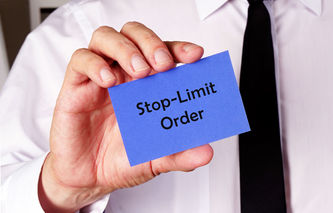In the world of options trading, there is a word that is used to describe the relationship between the current trading price of the security and the strike price of the option: moneyness. Whether an option is in-the-money or out-of-the money tells the holder of the option if the security they own has value.
Moneyness and Options
In this article, we'll be explaining the concept of moneyness as it applies to the trading of options. As part of that discussion, we'll talk about the two major categories of moneyness: in-the-money (ITM), and out-of-the money (OTM). We'll also discuss variations of these terms such as at-the-money (ATM). Finally, we'll provide an example demonstrating how these descriptions apply to the strike price of an option, and the current price of a security.
In-the-Money (ITM)
When an option is said to be in-the-money, it will usually sell at a premium that accounts not only for the time value of the option itself (it has the ability to increase in value over time), but also the fact that if the option could be exercised, then the holder would make a profit on the transaction.
There are two possible scenarios in which an option can be in-the-money:
Put Options: If the strike price of the put option is greater than the current market price of the underlying security or asset, then that option is said to be in-the-money.
Call Options: If the strike price of a call option is less than the current market price of the underlying security or asset, then that option is said to be in-the-money.
In-the-Money Variations
There are at least two variations on the ITM moneyness theme: far-in-the-money, and deep-in-the-money. In the case of a put option, these descriptions can apply when the strike price of the option is much greater than the current market price of the underlying security or asset. In the case of a call option, these descriptions can apply when the strike price of a call option is much less than the current market price of the underlying security or asset.
Out-of-the-Money (OTM)
When an option is said to be out-of-the-money, it will usually sell at a premium that accounts only for the time value of the option itself (it has the ability to increase in value over time). An out-of-the-money option has no intrinsic value because if the option could be exercised, the holder would not make a profit on the transaction.
There are two possible scenarios in which an option can be out-of-the-money:
Put Options: If the strike price of the put option is less than the current market price of the underlying security or asset, then that option is said to be out-of-the-money.
Call Options: If the strike price of a call option is greater than the current market price of the underlying security or asset, then that option is said to be out-of-the-money.
Out-of-the-Money Variations
There are at least two variations on the OTM moneyness theme: far-out-of-the-money, and deep-out-of-the-money. In the case of a put option, these descriptions can apply when the strike price of the option is much lower than the current market price of the underlying security or asset. In the case of a call option, these descriptions can apply when the strike price of a call option is much higher than the current market price of the underlying security or asset.
At-the-Money (ATM)
When an option is said to be at-the-money, the strike price will be exactly equal to the current market price of the underlying security or asset. An at-the-money option has no intrinsic value because if the option could be exercised, then the holder would not make a profit or loss on the transaction. The only value it possesses is its ability to shift to an ITM position over time.
At-the-Money Variations
In the real trading world, it would be somewhat rare that an option's strike price would be exactly equal to the current market price of the underlying security or asset. Instead, options that are approaching this state are usually sold as near-the-money or close-to-the-money.
Example
Here we're going to use a simple example that demonstrates the moneyness terms previously explained. The basis for this example is a stock with a current market price of $50 per share.
Options that are in-the-money include:
A put option with a strike price of $55.
A call option with a strike price of $45.
Options that are out-of-the-money include:
A put option with a strike price of $45.
A call option with a strike price of $55.
Options that are at-the-money include:
Either a put or a call option with a strike price of $50.
Calculating Moneyness
A Black-Scholes calculator can be used to measure moneyness quantitatively by determining the value of an option. Keep in mind that volatility, and time, will affect moneyness. The more time until the option expires, the greater the chance moneyness will change.
Finally, market quotes for out-of-the-money options are generally more reliable than quotes for in-the-money options. This is because out-of-the-money options can be used for speculative purposes, are traded more frequently, and therefore offer the investor greater liquidity.


